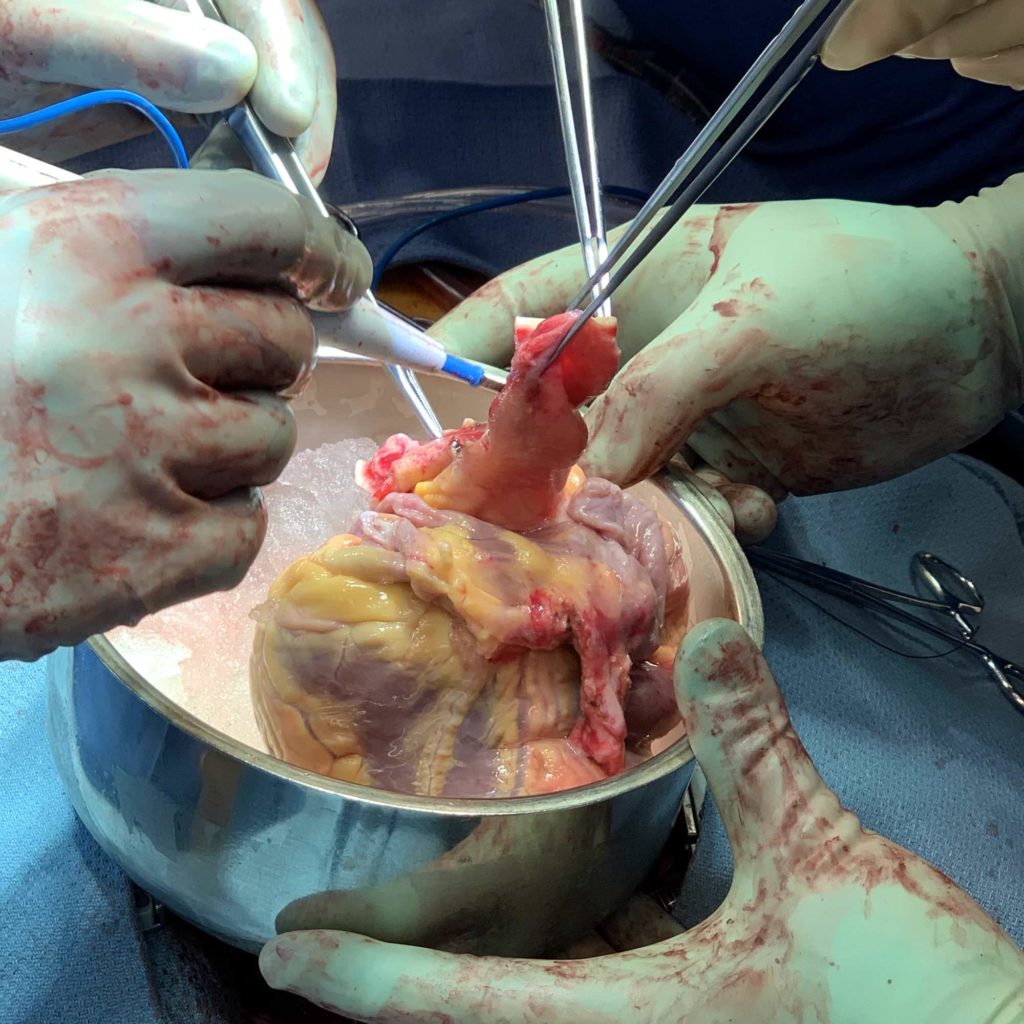Orthotopic heart transplantations (OHTs) are some of my favorite procedures as a cardiothoracic anesthesiologist! After establishing general endotracheal anesthesia (GETA) with standard monitors, an arterial line, a central line (often with pulmonary artery catheter), large-bore peripheral intravenous (PIV) access, and transesophageal echocardiography (TEE), the remainder of the procedure is carefully coordinated with the team procuring the donor heart. The goal is to minimize the amount of time the heart spends outside of a body (the “ischemic time”).

To keep things simple, cardiothoracic surgeons begin with a midline chest incision followed by sternotomy and pericardiotomy. After the patient is systemically heparinized, the ascending aorta is cannulated followed by separate superior and inferior vena cava cannulations (“bicaval” venous cannulation). Cardiopulmonary bypass (CPB) is initiated once the donor organ is “nearby” but the recipient’s heart is not actually explanted until the donor heart is visualized.
The simplest way to think about an OHT is in terms of the actual connections to the right atrium (RA), right ventricle (RV), left atrium (LA) and left ventricle (LV). The RA is connected to the SVC and IVC, the RV to the pulmonary artery (PA), the LA to the pulmonary veins, and the LV to the ascending aorta. All of these connections have to be addressed with the donor heart.
Most commonly, I’ve seen a cuff of the native left atrium containing the pulmonary veins sutured to the donor left atrium. Often times the ascending aorta anastomosis is created next to allow de-airing via an aortic root vent and reperfusion of the donor heart by removing the aortic cross-clamp. Finally, the right-sided anastomoses are completed (SVC, IVC, and PA), CPB cannulas are removed, purse-strings are tied down, and protamine is administered to reverse heparinization.
As with all things in medicine, there are often several ways to accomplish the same goal. I’ve shared the surgical approach I’ve seen the most often in practice. Drop me a comment below with questions! 🙂





